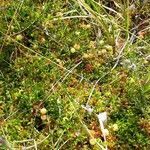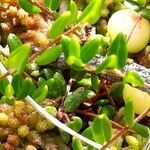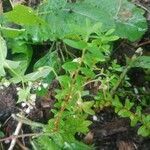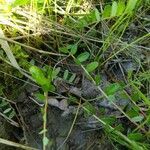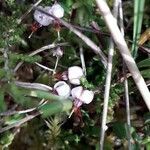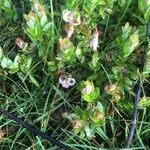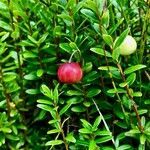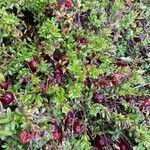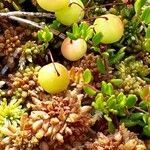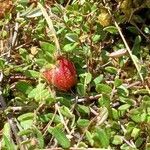Evergreen trailing shrub with very slender stems; lvs leathery, subsessile, elliptic-oblong, 5–15 mm (the largest usually > 1 cm), rounded at the tip, flat or scarcely revolute; fls 2–6 in a cluster, solitary in the axils of the reduced lower lvs of a normal branch; pedicels 1–3 cm; bracteoles above the middle of the pedicel, green, 2–4 × 1–2 mm; cor white to pink, 1 cm wide, deeply 4-cleft, the lobes strongly reflexed; styles 5–7 mm; fr red, 1–1.5 cm, tart; 2n=24. Bogs; Nf. to Man., s. to Va., O., and n. Ill., and locally in the mts. to N.C. and Tenn. June–Aug. (Oxycoccus m.)
Plants often ascending, shoots 0.4-1.5 dm. Leaf blades glaucous abaxially, green adaxially, usually narrowly elliptic to elliptic, rarely oblong, 5-18 m 2-55 mm, margins entire, slightly revolute. Inflorescences in axils of leaflike bracts at base of current year’s shoots. Pedicels nodding, slender, 2-3 cm, bracteolate; bracteoles 2, greenish white, scalelike, 1-2 mm wide. Flowers: calyx lobes relatively small; corolla strongly reflexed at anthesis, white to pink; filaments hairy; anther tubules 1-2 mm. Berries red to pink, 9-14 mm diam., smooth. 2n = 24.
